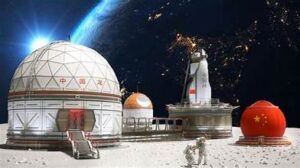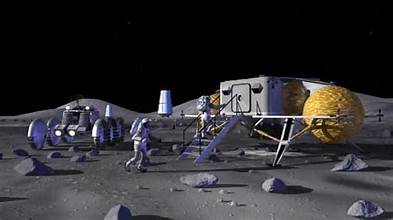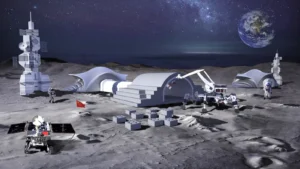China’s space exploration ambitions are reaching new heights with its plan to establish a lunar base. As the world’s most populous country and a rapidly growing economic powerhouse, China is set to make significant strides in space technology and exploration in the coming decade. This article delves into China’s lunar base plans, their implications, and what we can expect in the next ten years.
1. China’s Lunar Exploration Goals
China’s space agency, the China National Space Administration (CNSA), has outlined an ambitious roadmap for lunar exploration. This roadmap includes both manned and unmanned missions aimed at establishing a sustainable presence on the Moon. The primary goal is to create a lunar base by the early 2030s, which will serve as a springboard for further space exploration and resource utilization.
2. Key Milestones in the Lunar Base Plan
China’s lunar base program consists of several key milestones:
a. Unmanned Missions:
China has already made significant progress with its Chang’e series of lunar missions. The Chang’e 4 mission, which successfully landed on the far side of the Moon in 2019, was a landmark achievement. The upcoming Chang’e 7 and Chang’e 8 missions are set to conduct extensive lunar surface exploration and preliminary base construction work.
b. Manned Missions:
The CNSA plans to send astronauts to the Moon to conduct scientific research and begin assembling the lunar base. The Chang’e 6 mission, expected to return lunar samples to Earth, will provide valuable data for planning the manned missions. Following this, China aims to send astronauts to the Moon for extended stays, laying the groundwork for the lunar base.
c. Lunar Base Construction:
The construction of the lunar base will involve several phases. Initial stages will focus on building essential infrastructure, including habitats, laboratories, and power sources. Advanced robotics and autonomous systems will play a crucial role in this phase, minimizing the need for human presence during the initial construction period.
3. Technological Innovations Driving the Project
China’s lunar base plans are supported by a range of technological innovations:
a. Lunar Landing Technology:
China is developing advanced landing technology to ensure safe and precise landings on the lunar surface. This includes improvements in landing gear, navigation systems, and descent control mechanisms.
b. Sustainable Energy Solutions:
A key challenge for the lunar base will be powering its operations. China is exploring various sustainable energy solutions, including solar power and nuclear energy. Solar panels will be critical for generating electricity, while nuclear reactors could provide a reliable power source for extended missions.
c. Advanced Life Support Systems:
To support human life on the Moon, China is developing advanced life support systems. These systems will include oxygen generation, waste recycling, and habitat maintenance technologies. Ensuring a stable and safe environment for astronauts will be a top priority.
4. International Collaboration and Competition
China’s lunar ambitions are not occurring in isolation. Several countries and private entities are also investing heavily in lunar exploration. While there is potential for international collaboration, such as sharing scientific data and resources, there is also competition. China’s advancements in space technology may influence geopolitical dynamics and encourage other nations to accelerate their own space programs.
5. Economic and Scientific Implications
The establishment of a lunar base has far-reaching economic and scientific implications:
a. Resource Utilization:
The Moon is rich in resources, including rare minerals and water ice. China’s lunar base will facilitate the extraction and utilization of these resources, which could revolutionize space exploration and support future missions to Mars and beyond.
b. Scientific Research:
A lunar base will provide a unique platform for conducting scientific research in fields such as astronomy, geology, and biology. The Moon’s environment offers opportunities to study cosmic phenomena and understand the effects of long-term space habitation on human health.
c. Technological Advancements:
The technologies developed for lunar base construction will have broader applications, potentially benefiting various industries on Earth. Innovations in materials science, robotics, and energy systems could lead to advancements in other fields, including healthcare and environmental management.
6. Challenges and Risks
Despite the promising prospects, China’s lunar base project faces several challenges and risks:
a. Technical Challenges:
Building and maintaining a lunar base requires overcoming numerous technical challenges, including the harsh lunar environment, radiation exposure, and limited communication with Earth. Addressing these challenges will require cutting-edge technologies and robust engineering solutions.
b. Financial Costs:
The cost of establishing and maintaining a lunar base is substantial. Funding these projects will require careful financial planning and potentially international partnerships to share the burden of expenses.
c. Political and Diplomatic Risks:
Space exploration often intersects with political and diplomatic concerns. China’s lunar ambitions may face scrutiny from other nations and organizations, leading to potential conflicts or diplomatic negotiations.
7. What to Expect in the Next Decade
Over the next decade, we can anticipate several key developments in China’s lunar base program:
a. Successful Execution of Upcoming Missions:
The successful completion of planned missions, including unmanned landings and sample returns, will be critical for the progress of China’s lunar base project. These missions will provide valuable data and pave the way for manned missions.
b. Construction of the Lunar Base:
The initial phases of lunar base construction are expected to begin in the early 2030s. We may see the establishment of basic infrastructure, including habitats and research facilities.
c. Increased International Interest:
China’s lunar base plans will likely spur increased interest and investment in lunar exploration from other countries and private entities. This could lead to new collaborations and advancements in space technology.
Conclusion
China’s ambitious lunar base plans represent a significant milestone in space exploration. Over the next decade, we can expect to see major advancements in lunar technology, scientific research, and international space cooperation. As China moves forward with its lunar base project, the implications for science, technology, and global space dynamics will be profound and far-reaching.





